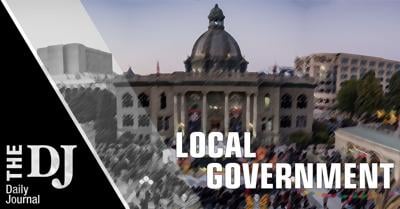San Carlos officials are voicing support for taking time to explore how a community foundation could be best structured to fund a wide array of initiatives and how to ensure residents engage in its formation in discussing how some $2 million of a $6 million PG&E settlement could be directed.
For months, officials have weighed a variety of uses for the $6 million the city collected from the utility in May, more than a year after the city and Pacific Gas and Electric reached a settlement stemming from PG&E’s mishandling of communication regarding the safety of a San Carlos natural gas line in 2012. Dedicating the funds toward upgrading the Holly Street and Highway 101 interchange and affordable housing projects are among the ideas officials have considered, but committing $2 million toward a community foundation benefiting San Carlos organizations and projects has been a mainstay in City Council discussions about the funds.
In an initial discussion of the funds more than a year ago, Vice Mayor Cameron Johnson suggested officials explore setting aside a portion to create a community foundation supporting local organizations and efforts. At Monday’s meeting, he acknowledged former mayor Tom Davids’ role in recognizing and supporting the cluster of volunteer-driven, community organizations in the city with the nonprofit San Carlos Together, and said the opportunity to continue to support them with the unexpected windfall fell in line with the vision Davids set.
Noting the influx of new businesses and developments in San Carlos in recent years, Johnson observed the city’s chance to grow the fund beyond its initial amount.
“I think we have an opportunity to create a vehicle to capture a lot of those resources,” he said, according to a video of Monday’s City Council meeting. “I think this could be a historic moment for our city in that many decades in the future we could look back and see a huge thriving organization with a growing endowment.”
Though Johnson supported forming a self-governing, apolitical organization that can partner with the city and accept a range of donations, he advocated for council oversight as a foundation is established through the formation of its mission, vision, values and bylaws, a process he said could take a year or 18 months.
“That’s my perspective, is that ultimately you want an independent organization but that we need to go through some transition period,” he said.
Though Councilman Mark Olbert supported Johnson’s vision for creating a foundation, he wondered if the city could engage the community by distributing a request for proposals within the community and seeing whether residents step forward with ideas of their own. By giving residents a chance to shape the foundation earlier on, said Olbert, the foundation may be more successful in aligning with community needs.
“That way, we can use community crowd-sourced thinking and energy to make this thing work,” he said. “I think it works better if the community grows it.”
City Manager Jeff Maltbie said the city has previously engaged the community in similar outreach processes and could start spreading the word about the effort and the need for volunteers to help with projects like drafting bylaws.
Councilmembers discussed ways of structuring the governing board and foundation membership so funds could be used toward a range of beneficiaries. If councilmembers were to appoint members of directors to the foundation’s board, the organization would be subject to the Brown Act and also be unable to grant funds toward city projects, explained Assistant City Manager Tara Peterson.
Though they made no decisions Monday, officials discussed appointing members and directors to the board and allowing them to select their successors. City Attorney Greg Rubens said once all of those appointed by the City Council step down, the limitations set by the Brown Act would expire and the organization would be allowed to make grants toward city projects.
Councilman Ron Collins asked how councilmembers could ensure those carrying out a foundation’s bylaws are following them and staying focused on community projects. Rubens said requiring votes on how to spend an endowment’s interest to reach a supermajority or unanimous count and putting parameters on how the $2 million donation the council could make to the foundation are among the ways councilmembers could chart out use of the funds.
“I would like to make sure that however we participate in the setup of this, we make it pretty strict,” said Collins.
Councilman Matt Grocott was joined by Mayor Bob Grassilli in voicing support for an endowment in which the principal is invested and its interest income is spent toward specific programs each year. Having observed organizations whose support has expanded beyond their initial charge, Grocott added that he hoped the funds would be dedicated to organizations and projects in San Carlos instead of being distributed in other communities.
“For me, it would be preferable for it to be an organization that strictly focuses on San Carlos,” he said.























(0) comments
Welcome to the discussion.
Log In
Keep the discussion civilized. Absolutely NO personal attacks or insults directed toward writers, nor others who make comments.
Keep it clean. Please avoid obscene, vulgar, lewd, racist or sexually-oriented language.
Don't threaten. Threats of harming another person will not be tolerated.
Be truthful. Don't knowingly lie about anyone or anything.
Be proactive. Use the 'Report' link on each comment to let us know of abusive posts.
PLEASE TURN OFF YOUR CAPS LOCK.
Anyone violating these rules will be issued a warning. After the warning, comment privileges can be revoked.